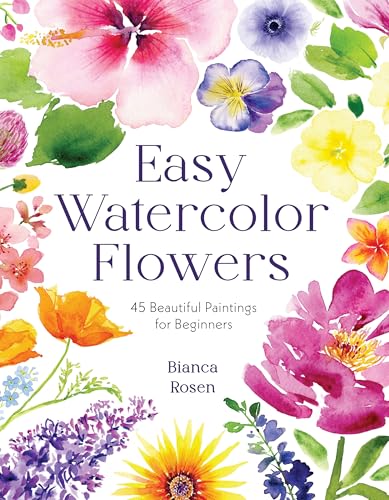Watercolor Workbooks: Beginner’s Guide to Painting Success
Unlock Your Inner Artist: A Deep Dive into Beginner-Friendly Watercolor Workbooks 🎨
So you’re ready to dive into the vibrant world of watercolors? That’s fantastic! But staring at a blank page can be intimidating, especially when you’re just starting. Luckily, beginner-friendly watercolor workbooks are here to help you build confidence and technique. Let’s explore what makes these workbooks so valuable and what to look for when choosing one.
Why Choose a Watercolor Workbook for Beginners? 🤔
Watercolor painting can seem tricky at first. Controlling the water, mixing colors, and achieving desired effects all take practice. Beginner-friendly workbooks provide a structured learning environment, offering numerous benefits:
- Guided Practice: Workbooks offer pre-printed outlines and step-by-step instructions, eliminating the fear of a blank canvas. You can focus on developing your brush control and color mixing skills.
- Skill Development: They often cover fundamental techniques like washes, gradients, lifting, and layering, providing a solid foundation for more advanced painting.
- Reduced Frustration: Pre-determined exercises and color palettes take away some of the guesswork, minimizing potential frustration and encouraging consistent practice.
- Inspiration and Motivation: Completing projects in a workbook can be incredibly rewarding and keeps you motivated to continue learning. 🎉
- Convenience: Everything is contained in one place. You don’t need to hunt for inspiration or project ideas.
What to Look for in a Beginner-Friendly Watercolor Workbook 🔍
Not all watercolor workbooks are created equal. Here are some key features to consider when choosing one:
H3: Paper Quality is Paramount 📄
The most important aspect of any watercolor workbook is the paper. Look for:
- Watercolor Paper: Specifically labeled as watercolor paper, usually 140lb/300gsm or heavier. This thickness prevents the paper from buckling or warping when wet.
- Cold Press: This texture provides a slightly rough surface, ideal for watercolor as it allows the paint to grip the paper effectively.
- Acid-Free: Acid-free paper will prevent your artwork from yellowing or deteriorating over time.
H3: Clear and Concise Instructions ✍️
A good workbook will provide easy-to-understand instructions, even for absolute beginners. Look for:
- Step-by-Step Guidance: Broken down into manageable steps with clear explanations.
- Visual Aids: Diagrams, color swatches, and examples to illustrate techniques.
- Troubleshooting Tips: Advice on common mistakes and how to correct them.
H3: Relevant Exercises and Projects 🎨
The exercises should be designed to build your skills progressively. Consider:
- Variety: A mix of different techniques and subjects (e.g., landscapes, florals, still life) to keep you engaged.
- Complexity: Starting with simple exercises and gradually increasing the difficulty as you progress.
- Personal Interest: Choose a workbook that features subjects and styles you enjoy, as this will increase your motivation to practice.
H3: Value for Money 💰
Consider the overall value of the workbook. Are you getting enough exercises and projects for the price? Does it include any extra resources, such as color charts or online tutorials?
Beyond the Workbook: Essential Watercolor Supplies 🖌️
While a workbook provides structure and guidance, you’ll also need some basic watercolor supplies:
- Watercolor Paints: A basic set of student-grade watercolors is a great starting point. Tube paints or pan sets are both viable options.
- Watercolor Brushes: A few different sizes and shapes will be useful. Round brushes are versatile, and a flat brush can be used for washes.
- Palette: To mix your paints. A ceramic palette is ideal, but a plastic palette will also work.
- Water Container: Two containers are preferable: one for rinsing your brush and one for clean water.
- Paper Towels: For blotting excess water and cleaning your brushes.
- Masking Tape: To secure your paper to a board or table and create clean edges.
Conclusion 🖼️
A beginner-friendly watercolor workbook is an invaluable tool for anyone looking to learn this beautiful art form. By choosing a workbook with high-quality paper, clear instructions, and engaging exercises, you can build a solid foundation in watercolor techniques and unlock your creative potential. So grab your paints, find a comfortable spot, and get ready to create! Happy painting! 😊





Post Comment